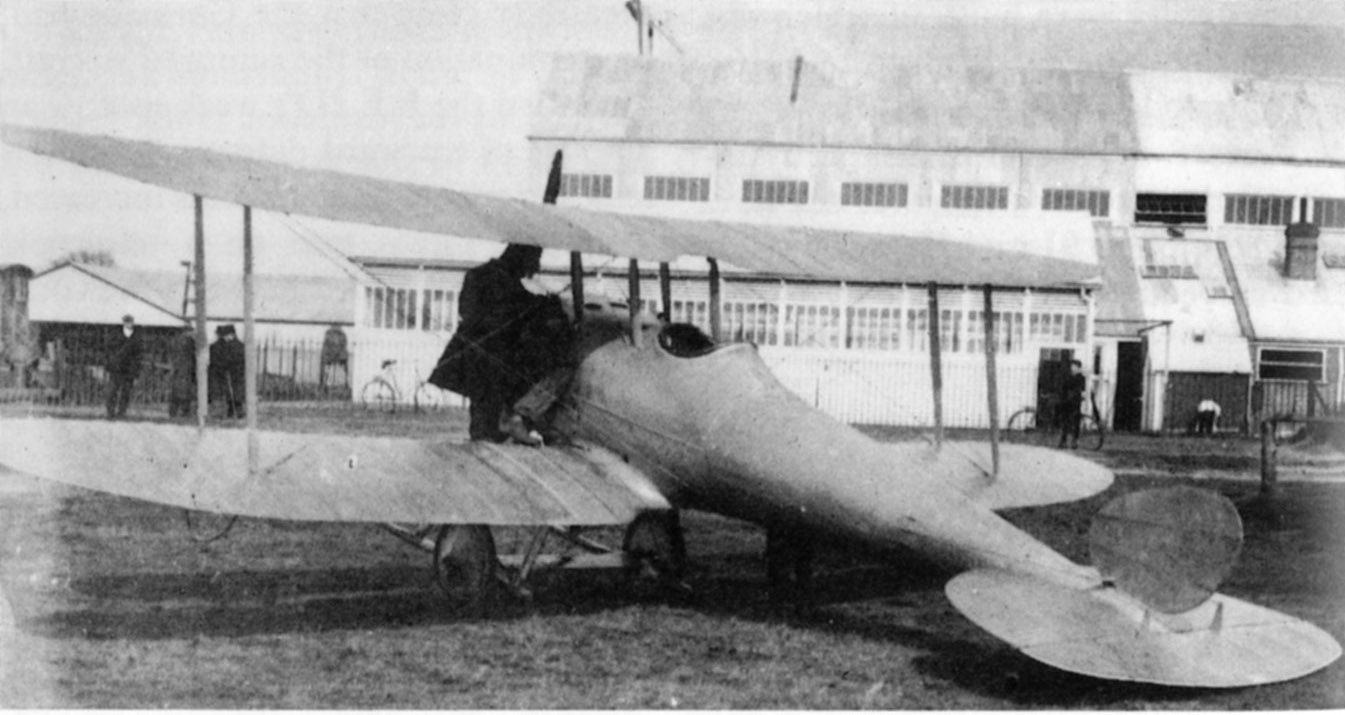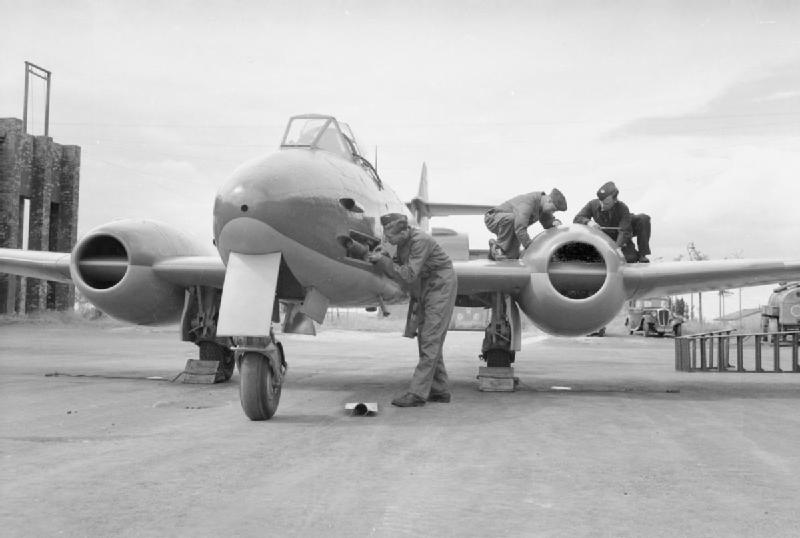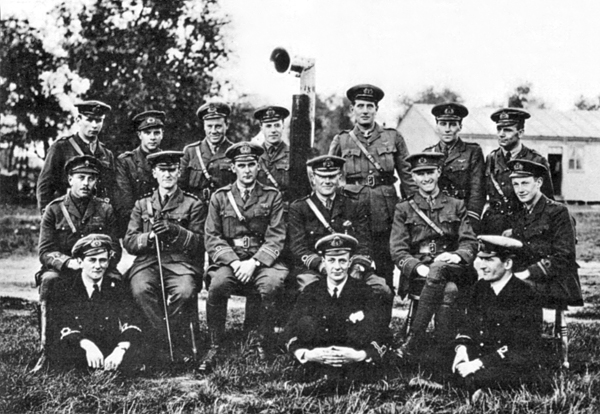|
Marine Aircraft Experimental Establishment
The Marine Aircraft Experimental Establishment (MAEE) was a British military research and test organisation. It was originally formed as the Marine Aircraft Experimental Station in October 1918 at RAF Isle of Grain, a former Royal Naval Air Service seaplane base, to design, test and evaluate seaplanes, flying boats and other aircraft with a naval connection. It was renamed as the Marine and Armament Experimental Establishment on 16 March 1920 to recognise that weapons and other equipment were evaluated as well as complete aircraft. It was renamed again on 1 March 1924 as the Marine Aircraft Experimental Establishment. Relocations On 16 June 1924 the Establishment moved to the site of the former Seaplane Experimental Station seaplane base at Felixstowe. It carried out research and development work on water-based aircraft for service needs and also on their equipment and on air-sea rescue apparatus. The Establishment's work grew during its early years and by 1930 it was carrying ... [...More Info...] [...Related Items...] OR: [Wikipedia] [Google] [Baidu] |
Isle Of Grain
Isle of Grain (Old English ''Greon'', meaning gravel) is a village and the easternmost point of the Hoo Peninsula within the district of Medway in Kent, south-east England. No longer an island and now forming part of the peninsula, the area is almost all marshland and is a major habitat for diverse wetland birds. The village constitutes a civil parish, which at the 2011 census had a population of 1,648, a net decrease of 83 people in 10 years. History Extract from the ''Topographical Dictionary of Great Britain and Ireland'' by John Gorton, 1833: "GRAINE, ISLE OF, co. Kent'' "A parish in the Hundred of Hoo, lathe of Aylesford, opposite to Sheppey at the mouth of the Thames; it is about three miles and a half long, and two and a half broad and is formed by Yantlet Creek running from the Medway to the Thames. The Creek was filled up, and had a road across it for 40 years until 1823, when the Lord Mayor ordered it to be again reopened, so as to give about eight feet n ... [...More Info...] [...Related Items...] OR: [Wikipedia] [Google] [Baidu] |
Aeroplane And Armament Experimental Establishment
The Aeroplane and Armament Experimental Establishment (A&AEE) was a research facility for British military aviation from 1918 to 1992. Established at Martlesham Heath, Suffolk, the unit moved in 1939 to Boscombe Down, Wiltshire, where its work continues following privatisation as part of the Qinetiq company. History In 1917, the Experimental Aircraft Flight of the Central Flying School was transferred from Upavon, Wiltshire to a site on the heathland at Martlesham, Suffolk, and on 16 January 1917 Martlesham Heath Airfield was officially opened, as an experimental airfield. The unit was renamed the Aeroplane Experimental Unit, Royal Flying Corps. After the end of World War I the site continued to be used and was, once again, renamed as the Aeroplane and Armament Experimental Establishment of the Royal Air Force. At the outbreak of the Second World War, on 9 September, the A&AEE was removed to RAF Boscombe Down, Wiltshire, owing to the proximity of Martlesham Heat ... [...More Info...] [...Related Items...] OR: [Wikipedia] [Google] [Baidu] |
Fleet Air Arm
The Fleet Air Arm (FAA) is one of the five fighting arms of the Royal Navy and is responsible for the delivery of naval air power both from land and at sea. The Fleet Air Arm operates the F-35 Lightning II for maritime strike, the AW159 Wildcat and AW101 Merlin for commando and anti-submarine warfare and the BAE Hawk as an aggressor. The Fleet Air Arm today is a predominantly rotary force, with helicopters undertaking roles once performed by biplanes such as the Fairey Swordfish. The Fleet Air Arm was formed in 1924 as an organisational unit of the Royal Air Force, which was then operating the aircraft embarked on RN ships—the Royal Naval Air Service having been merged with the Army's Royal Flying Corps in 1918 to form the Royal Air Force—and did not come under the direct control of the Admiralty until mid-1939. During the Second World War, the Fleet Air Arm operated aircraft on ships as well as land-based aircraft that defended the Royal Navy's shore establishments a ... [...More Info...] [...Related Items...] OR: [Wikipedia] [Google] [Baidu] |
1918 Establishments In The United Kingdom
This year is noted for the end of the World War I, First World War, on the eleventh hour of the eleventh day of the eleventh month, as well as for the Spanish flu pandemic that killed 50–100 million people worldwide. Events Below, the events of World War I have the "WWI" prefix. January * January – 1918 flu pandemic: The "Spanish flu" (influenza) is first observed in Haskell County, Kansas. * January 4 – The Finnish Declaration of Independence is recognized by Russian Soviet Federative Socialist Republic, Soviet Russia, Sweden, German Empire, Germany and France. * January 9 – Battle of Bear Valley: U.S. troops engage Yaqui people, Yaqui Native American warriors in a minor skirmish in Arizona, and one of the last battles of the American Indian Wars between the United States and Native Americans. * January 15 ** The keel of is laid in Britain, the first purpose-designed aircraft carrier to be laid down. ** The Red Army (The Workers and Peasants Red Army) ... [...More Info...] [...Related Items...] OR: [Wikipedia] [Google] [Baidu] |
Martlesham Heath Airfield
Royal Air Force Martlesham Heath or more simply RAF Martlesham Heath is a former Royal Air Force station located southwest of Woodbridge, Suffolk, England. It was active between 1917 and 1963, and played an important role in the development of Airborne Interception radar. History RFC/RAF prewar use Martlesham Heath was first used as a Royal Flying Corps airfield during the First World War. In 1917 it became home to the Aeroplane Experimental Unit, RFC which moved from Upavon with the site named as the Aeroplane Experimental Station which became the Aeroplane Experimental Establishment (Home) in 1920 which became the Aeroplane and Armament Experimental Establishment (A&AEE) in 1924. The A&AEE carried the evaluation and testing of many of the aircraft types and much of the armament and other equipment that would later be used during the Second World War. No. 22 Squadron RAF and No. 15 Squadron RAF were present during the 1920s. No. 64 arrived in the 1930s. RAF Fighter Comman ... [...More Info...] [...Related Items...] OR: [Wikipedia] [Google] [Baidu] |
Aeroplane & Armament Experimental Establishment
The Aeroplane and Armament Experimental Establishment (A&AEE) was a research facility for British military aviation from 1918 to 1992. Established at Martlesham Heath, Suffolk, the unit moved in 1939 to Boscombe Down, Wiltshire, where its work continues following privatisation as part of the Qinetiq company. History In 1917, the Experimental Aircraft Flight of the Central Flying School was transferred from Upavon, Wiltshire to a site on the heathland at Martlesham, Suffolk, and on 16 January 1917 Martlesham Heath Airfield was officially opened, as an experimental airfield. The unit was renamed the Aeroplane Experimental Unit, Royal Flying Corps. After the end of World War I the site continued to be used and was, once again, renamed as the Aeroplane and Armament Experimental Establishment of the Royal Air Force. At the outbreak of the Second World War, on 9 September, the A&AEE was removed to RAF Boscombe Down, Wiltshire, owing to the proximity of Martlesham Heath to the ea ... [...More Info...] [...Related Items...] OR: [Wikipedia] [Google] [Baidu] |
Royal Aircraft Establishment
The Royal Aircraft Establishment (RAE) was a British research establishment, known by several different names during its history, that eventually came under the aegis of the UK Ministry of Defence (MoD), before finally losing its identity in mergers with other institutions. The first site was at Farnborough Airfield ("RAE Farnborough") in Hampshire to which was added a second site RAE Bedford ( Bedfordshire) in 1946. In 1988 it was renamed the Royal Aerospace Establishment (RAE) before merging with other research entities to become part of the new Defence Research Agency in 1991. History In 1904–1906 the Army Balloon Factory, which was part of the Army School of Ballooning, under the command of Colonel James Templer, relocated from Aldershot to the edge of Farnborough Common in order to have enough space to inflate the new "dirigible balloon" or airship which was then under construction.Walker, P; Early Aviation at Farnborough, Volume I: Balloons, Kites and Airships, Mac ... [...More Info...] [...Related Items...] OR: [Wikipedia] [Google] [Baidu] |
Boscombe Down
MoD Boscombe Down ' is the home of a military aircraft testing site, on the southeastern outskirts of the town of Amesbury, Wiltshire, England. The site is managed by QinetiQ, the private defence company created as part of the breakup of the Defence Evaluation and Research Agency (DERA) in 2001 by the UK Ministry of Defence (MoD). The base was originally conceived, constructed, and operated as Royal Air Force Boscombe Down, more commonly known as RAF Boscombe Down, and since 1939, has evaluated aircraft for use by the British Armed Forces. The airfield has two runways, one in length, and the second . The airfield's evaluation centre is currently home to Rotary Wing Test and Evaluation Squadron (RWTS), Fast Jet Test Squadron (FJTS), Heavy Aircraft Test Squadron (HATS), Handling Squadron, and the Empire Test Pilots' School (ETPS). History First World War An aerodrome opened at the Boscombe Down site in October 1917 and operated as a Royal Flying Corps Training Depot Station. K ... [...More Info...] [...Related Items...] OR: [Wikipedia] [Google] [Baidu] |
Ministry Of Supply
The Ministry of Supply (MoS) was a department of the UK government formed in 1939 to co-ordinate the supply of equipment to all three British armed forces, headed by the Minister of Supply. A separate ministry, however, was responsible for aircraft production, and the Admiralty retained responsibilities for supplying the Royal Navy.Hornby (1958) During the war years the MoS was based at Shell Mex House in The Strand, London. The Ministry of Supply also took over all army research establishments in 1939. The Ministry of Aircraft Production was abolished in 1946, and the MoS took over its responsibilities for aircraft, including the associated research establishments. In the same year, it also took on increased responsibilities for atomic weapons, including the H-bomb development programme. The Ministry of Supply was abolished in late 1959 and its responsibilities passed to the Ministry of Aviation, the War Office, and the Air Ministry. The latter two ministries were subs ... [...More Info...] [...Related Items...] OR: [Wikipedia] [Google] [Baidu] |
Royal Naval Air Service
The Royal Naval Air Service (RNAS) was the air arm of the Royal Navy, under the direction of the Admiralty's Air Department, and existed formally from 1 July 1914 to 1 April 1918, when it was merged with the British Army's Royal Flying Corps to form the Royal Air Force (RAF), the world's first independent air force. It was replaced by the Fleet Air Arm, initially consisting of those RAF units that normally operated from ships, but emerging as a separate unit similar to the original RNAS by the time of World War 2. Background In 1908, the British Government recognised the military potential of aircraft. The Prime Minister of the United Kingdom, Prime Minister, H. H. Asquith, approved the formation of an "Advisory Committee for Aeronautics" and an "Aerial Sub-Committee of the Committee of Imperial Defence". Both committees were composed of politicians, British Army, army officers and Royal Navy officers. On 21 July 1908 Captain Reginald Bacon, who was a member of the Aerial Na ... [...More Info...] [...Related Items...] OR: [Wikipedia] [Google] [Baidu] |
Helensburgh
Helensburgh (; gd, Baile Eilidh) is an affluent coastal town on the north side of the Firth of Clyde in Scotland, situated at the mouth of the Gareloch. Historically in Dunbartonshire, it became part of Argyll and Bute following local government reorganisation in 1996. Geography and geology Helensburgh is northwest of Glasgow. The town faces south towards Greenock across the Firth of Clyde, which is approximately wide at this point. Ocean-going ships can call at Greenock, but the shore at Helensburgh is very shallow, although to the west of the town the Gareloch is deep. Helensburgh lies at the western mainland end of the Highland Boundary Fault. This means that the hills to the north of Helensburgh lie in the Highlands, whereas the land to the south of Helensburgh is in the Lowlands or Central Belt of Scotland. Consequently, there is a wide variety of landscape in the surrounding area – for example, Loch Lomond (part of Scotland's first National Park) is only over ... [...More Info...] [...Related Items...] OR: [Wikipedia] [Google] [Baidu] |
Second World War
World War II or the Second World War, often abbreviated as WWII or WW2, was a world war that lasted from 1939 to 1945. It involved the World War II by country, vast majority of the world's countries—including all of the great powers—forming two opposing military alliances: the Allies of World War II, Allies and the Axis powers. World War II was a total war that directly involved more than 100 million Military personnel, personnel from more than 30 countries. The major participants in the war threw their entire economic, industrial, and scientific capabilities behind the war effort, blurring the distinction between civilian and military resources. Air warfare of World War II, Aircraft played a major role in the conflict, enabling the strategic bombing of population centres and deploying the Atomic bombings of Hiroshima and Nagasaki, only two nuclear weapons ever used in war. World War II was by far the List of wars by death toll, deadliest conflict in hu ... [...More Info...] [...Related Items...] OR: [Wikipedia] [Google] [Baidu] |






%2C_Helensburgh.jpg)
